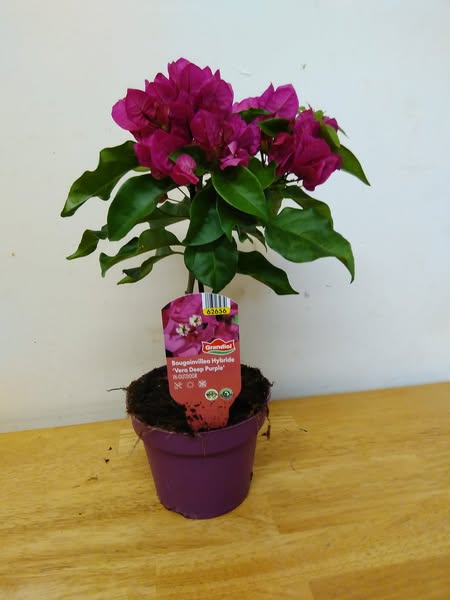Bougainvillea — the plant that turns ordinary fences into tropical art pieces — thrives in warm sunshine and gives off a “vacation vibe” even in the middle of suburbia. But if you live anywhere that experiences frost, you know the heartbreak of seeing those fiery blooms fade with the cold.
So here’s the truth: overwintering bougainvillea isn’t just possible — it’s essential if you want those jaw-dropping blooms to return come spring. And no, it’s not complicated. You just need to know when, how, and where.
Ready to save your bougainvillea from winter’s icy grip and prep it for a comeback next season?
Let’s get into the secrets.

Why Bougainvillea Needs Special Winter Care
Bougainvillea may be tough in the tropics, but it’s a softie when the temperature drops. Native to South America, this beauty thrives in USDA zones 9–11, where frost is rare and sun is abundant.
But the minute night temperatures dip below 40°F (4°C), it starts to sulk. Go lower than freezing? It could die back completely — or not recover at all.
So if you’re not in a year-round warm climate, winter protection is non-negotiable.
Preparing Bougainvillea for Overwintering
When Should You Start?
Timing matters more than you think. Start prepping your bougainvillea for its winter transition in early to mid-fall, especially if nighttime temperatures are hovering around 50°F (10°C).
Waiting too long could shock the plant — and shocked bougainvilleas don’t bloom well later.
Step-by-Step: Prepping Your Plant
Here’s exactly what to do:
- Inspect for Pests:
Before bringing any plant indoors, look for signs of aphids, spider mites, or mealybugs. Treat with insecticidal soap or neem oil if needed. - Light Prune:
Cut back any leggy, weak branches — but don’t go overboard. You want to keep its structure intact while reducing the size. - Stop Feeding:
No more fertilizer from late summer onward. You want the plant to slow down, not ramp up new growth that will struggle indoors. - Ease the Transition:
Don’t yank it straight indoors. Give it a few days in a shady, covered area (like a porch) to adjust to lower light levels before the big move.
Indoor Overwintering Options
Bougainvillea gives you two main overwintering paths — one where it sleeps, and one where it stays semi-active. The right one for you depends on your space, time, and preferences.
Option 1: Dormant Storage (Low-Light, Low-Maintenance)
If you don’t have a sunny indoor spot, let your bougainvillea go dormant.
- Where?
A cool, dark place like a basement, garage, or shed. Temperatures should stay between 40–55°F (4–13°C). - What to Expect:
It’ll drop its leaves. That’s normal! Dormancy helps it conserve energy. - Care Tips:
- Water just once every 3–4 weeks.
- Don’t fertilize at all.
- Check occasionally for mold or pests, but otherwise — let it rest.
This method mimics what the plant would naturally do in a chillier climate.
Option 2: Active Growth Indoors (Light, Warm, and Pretty)
Prefer to keep your bougainvillea looking lush through winter?
- Where?
A bright, south-facing window or sunroom is ideal. If that’s not available, supplement with a grow light. - Temperature Needs:
Keep it above 60°F (15°C) — no drafts or heat vents nearby! - Care Tips:
- Water when the top inch of soil feels dry.
- Mist occasionally to maintain humidity.
- Fertilize lightly once a month with a balanced liquid fertilizer.
This method takes a little more effort but lets you enjoy your bougainvillea year-round indoors.
Common Overwintering Mistakes to Avoid
Even experienced gardeners slip up. Avoid these traps:
- Overwatering:
The number one killer. Too much water = root rot. Always check soil before watering. - Sudden Light Changes:
Going from full sun outdoors to a dark basement can shock the plant. Transition it gradually over 3–5 days. - Ignoring Pests:
Indoor bougainvillea can still attract bugs. Check regularly for signs and act fast. - Placing Near Heat Sources:
Bougainvillea doesn’t like hot, dry air. Keep it away from radiators and heating vents. - Skipping the Prune:
Letting it grow wild before dormancy can lead to messy shape and weak branches in spring.
Waking It Up in Spring
Winter’s finally over — now what?
Here’s how to bring your bougainvillea back to life:
- Wait Until the Danger Has Passed
Don’t move it outside until nights are consistently above 50°F (10°C). - Slow Acclimation
Start with short stints outside in a shaded spot. Increase sunlight exposure gradually over 1–2 weeks. - Feed & Prune
- Use a high-potassium fertilizer (like 10-10-10 or 15-30-15) to encourage blooming.
- Trim off any dead or damaged stems.
- Repot If Needed
If it’s root-bound or the soil looks tired, consider refreshing the pot or moving up a size.
By mid-spring, your bougainvillea should be waking up — and by early summer? Expect a full-on floral explosion.
FAQs: Quick Answers for Bougainvillea Lovers
Can bougainvillea survive a light frost?
Not really. Even light frost can damage leaves and younger stems. Don’t risk it — bring it in or cover it if frost is forecasted.
Can I leave my bougainvillea outside in a pot over winter?
Only if you live in USDA Zone 9 or warmer. Otherwise, bring it in.
Will my bougainvillea bloom indoors?
It might — if it gets enough light and warmth. But don’t expect a full display. The big show usually happens after it returns outside in spring.
